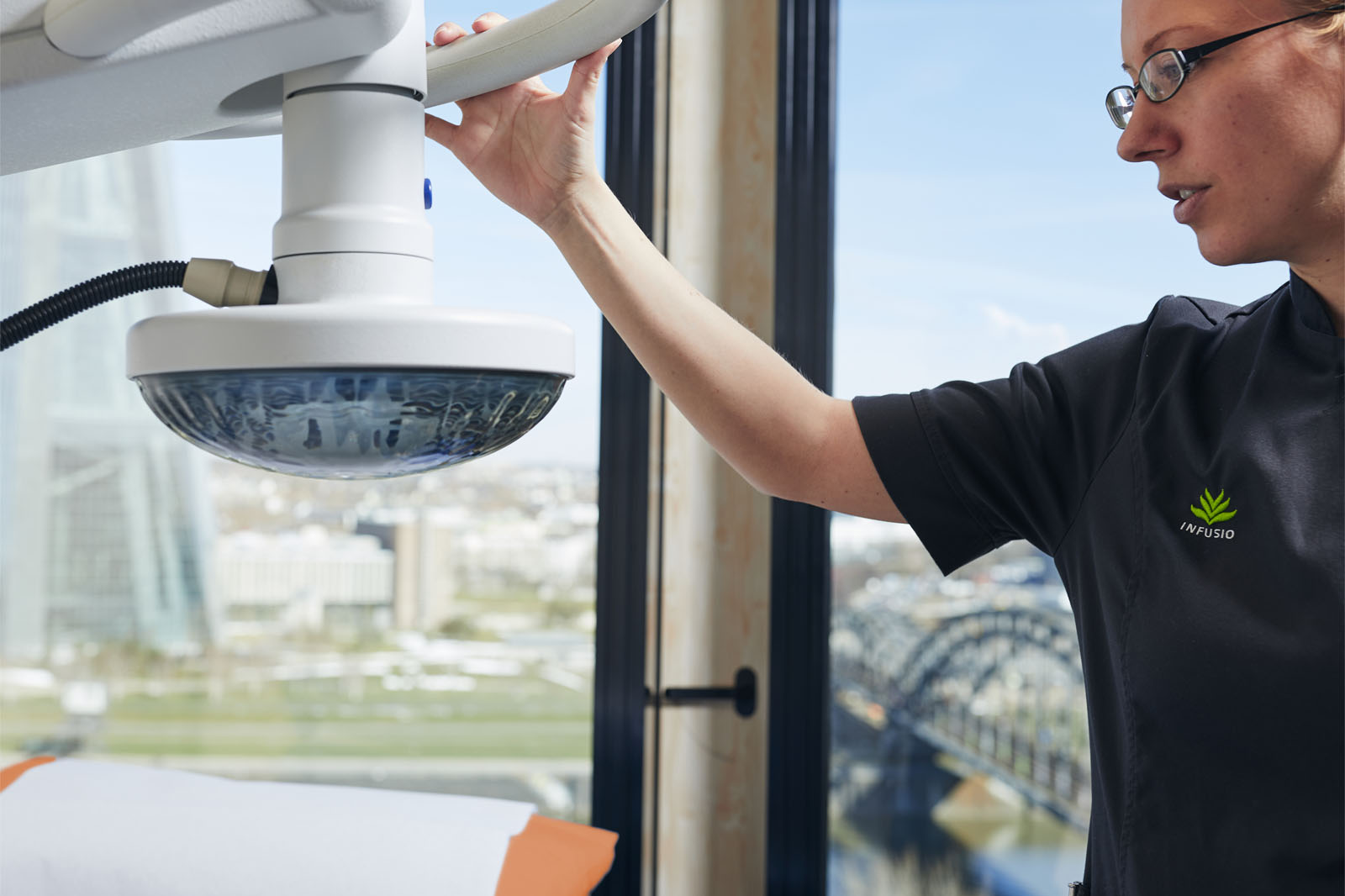
Various forms of hyperthermia
Word origins: Hyper means ‘above’, ‘more’ and ‘-thermia’ can be translated as temperature impact. In most contexts, the term refers to the body temperature of a living organism and specifically to the fact that this temperature is elevated compared to the standard value or is to be increased.
A natural form of hyperthermia would be a person with a fever who sweats at 39°C. Our body responds with certain signal paths to increase the body temperature, for example when infections are detected, because our immune system is more efficient in a slightly elevated temperature environment1.
Efforts to increase the body temperature, entirely or in relevant partial areas, are made for different therapeutic reasons and motivations. There are a number of associated distinctions and measures:
A. Active hyperthermia, also called fever therapy, means that the body of a patient is infected with certain pathogens, which cause fever as a natural reaction.
This idea even won a Nobel Prize in 1927, when Julius Wagner-Jauregg from Vienna found a method for treating syphilis prior to the discovery of penicillin. When he infected his patients with malaria, the resulting high fever successfully fought the syphilis, and the malaria symptoms were treated with quinine to lower the fever to a normal range.
William Coley, an American surgeon and oncologist, also had interesting successes in the late 19th century with his attempts to inject tumor patients with streptococcus bacteria to cause bouts of high fever. While this option has been greatly restricted, infusions of mistletoe extracts still play a significant role in holistic and particularly anthrophosophic oncology.
B. This is contrasted by passive hyperthermia. In that case, the heat is introduced externally – typically with a device. In accordance with an international consensus conference in Japan2, a distinction is made between whole body hyperthermia, local hyperthermia, and perfusion hyperthermia.
B1: Whole body hyperthermia refers to elevating the body’s core temperature in the entire body. This is typically done with water-filtered infrared lamps or a hot water bath. Depending on the scope of the desired temperature increase, whole body hyperthermia is either mild (approx. + 1°C), moderate (up to approx. + 1.5 to 2.5°C) or extreme (from + 3.5 to 6°C). Even mild to moderate temperature increases must be monitored, while extreme WBHT also requires sedation.
B2: In perfusion hyperthermia, fluids heated to approximately 42°C outside of the body are circulated in a body section, e.g. in a leg, the abdomen or the liver.
B3: In local hyperthermia, only one local region (an organ, joint or otherwise delineated area) is heated up. In this regard, another distinction is made between interstitial forms (e.g. something is introduced into the body and then heated up). The most common application is the so-called radiofrequency ablation (RFA), which uses electrically heated needles that reach temperatures of >70°C in a form of minimally invasive surgery to destroy tissue without the need for a large open incision. A frequent application is the removal of liver metastases.
On the other hand, there are non-invasive forms, in which the heat is applied to the patient from the outside. This is easier with target areas located close to the surface and more demanding if the target area is deeper in the body. The most common form of this application is the so-called dielectric heating. This method involves placing the patient between two electrodes that change their polarity millions of times per second. The water molecules existing in the body tissue are dipoles and respond to these changes by rotating, which in turn increases the temperature in the body based on friction.
Critics have pointed out that some dielectric heating procedures fail to reach sufficiently high temperatures in the necessary tissue depth. Commercially available equipment and the respective protocols differ in this regard; however, it has been proven with verifying temperature probes that sufficient warming is possible if these methods are used correctly.
> to the entire literature sources
-
Prof. G. Multhoff, Munich, proved in her doctoral thesis that so-called macrophages (scavenger cells) in our immune system are able to carry out their task of eliminating identified foreign cells more efficiently in an elevated temperature environment compared to a normal body temperature of 36.8°C. ↩
-
The Kadoto Fund International Forum 2004 – clinical group consensus. Van der Zee et al, Int.J.Hyperthermia, March 2008 (24)2:111-122 ↩
